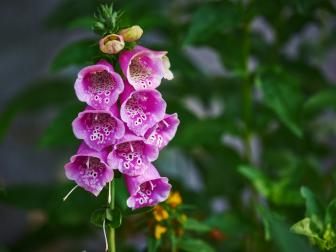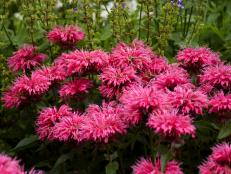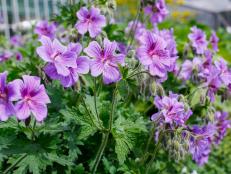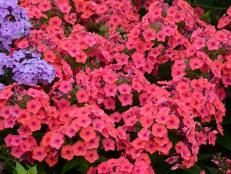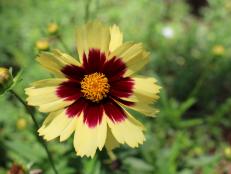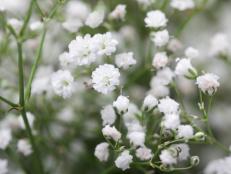Coneflower: Growing and Caring for Echinacea
An easy-to-grow native plant, the purple coneflower blooms in July and August.
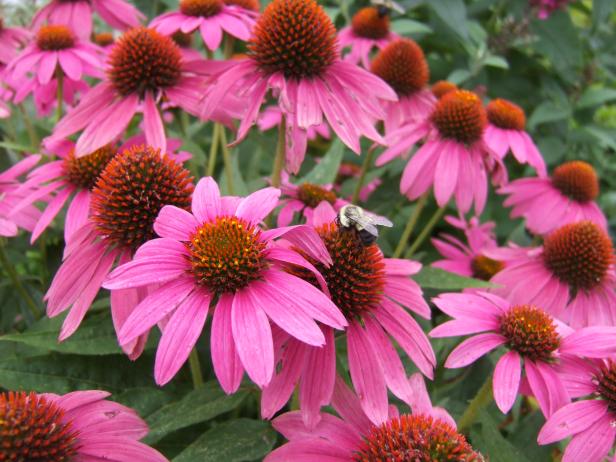
Julie Martens Forney
PowWow Wild Berry coneflower is a stunner in the summer garden, unfurling rosy-purple blooms.
For fuss-free color, native plants are the way to go, and native purple coneflower is no exception. This blooming beauty opens flowers in the heat of high summer, when other perennials fade. Known in botanical circles as Echinacea, coneflowers are tough as nails, standing up to heat, drought and winter cold. They’re deer-resistant and generally pest-free.
Unusual Coneflower Varieties 15 Photos
Add floral fireworks to your garden with new coneflowers that dazzle with exciting flower forms and a rainbow of petal colors.
Coneflowers easily earn their keep in any planting bed, but they’re an exceptional addition to a wildlife garden. Flowers beckon butterflies, beneficial insects and pollinators. If you let blossoms set seed, birds flock to feast on the seed-packed cones.
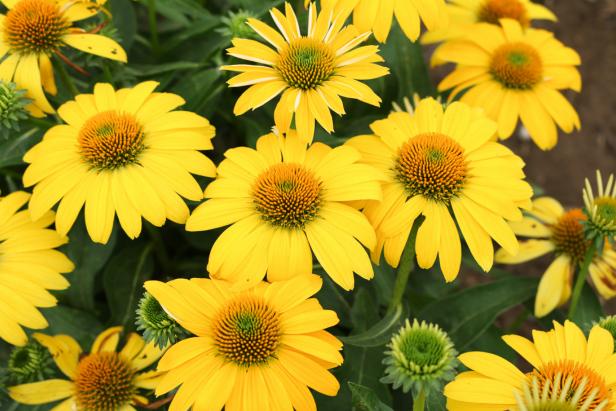
ProvenWinners.com
Sombrero Lemon Yellow coneflower
Coneflower FAQs
When do coneflowers emerge?
Plants poke through soil in mid- to late spring, unfurling green leaves with a reddish back.
When do coneflowers bloom?
Flowers usually start opening by midsummer and continue for roughly two months.
What color are coneflowers?
Newer coneflower varieties come in a rainbow of hues, including fiery red, cherry, tangerine, coral, rose pink and gold. The original native wildflower coneflowers open blossoms in rose-purple, pink and yellow.
How tall do coneflowers get?
Different types of coneflowers soar to different heights. Plants can be as tall as 4 feet, but many of the modern coneflower varieties stay in the 2-foot-tall range.
Can I grow coneflowers in pots?
Growing Echinacea in pots is a great idea. It’s an easy way to add steady color to containers for most of the growing season. Choose shorter coneflower varieties for growing in pots. Convert your container coneflower into an in-ground perennial by transplanting it into a planting bed in early fall, roughly 6 weeks before your region’s first frost.
Planting Echinacea
For success planting coneflowers, start with a sunny spot where plants will receive at least four hours of sun each day. Coneflowers can grow in less sun, but stems tend to be floppier with fewer flowers. Growing Echinacea with too little sun also makes plants more susceptible to diseases. In warmest regions, protect coneflowers from the hottest sun of the day. A spot with morning sun is ideal.
Soil that drains well is the secret to success with coneflowers. These tough native plants will grow in heavy clay, but you’ll need to water until plants are established. With clay soil, it’s also OK to loosen it a bit by adding organic matter, such as compost or composted manure. Once established, coneflowers are drought tolerant, so if your soil is soggy, you shouldn’t try to grow Echinacea. These perennials also fail to thrive in soil that doesn’t drain well in winter.
When to Plant Coneflower Seeds
If you’re planting coneflower seeds, sow seeds indoors in winter or outdoors in early spring or fall. With bottom heat, coneflower seeds typically germinate in a week or so. Outdoors, they may take three or four weeks. In the garden, they can sit through winter and sprout in spring. Coneflowers readily self-sow in the garden, so you can also scatter seeds from existing plants in fall. Then just watch for seedlings in spring.
Coneflower Care
Watering
Once coneflowers are established, they’re drought tolerant. In well-drained soil, allow soil to dry before watering. For new plants, maintain soil moisture during the first summer until plants have firmly established a strong tap root. In future years, you shouldn’t really need to water coneflowers in planting beds except in extreme drought conditions.
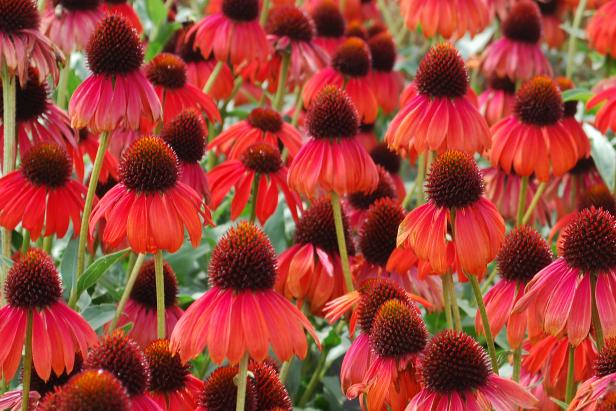
Ball Horticultural Co.
'Firebird' coneflower
Feeding
With too much fertilizer, plants produce lush leaves at the expense of flowers. Once coneflower plants are established in your garden, adding compost around them in early spring provides enough nourishment.
Pruning
Coneflowers don’t really require pruning during the growing season. Some gardeners remove the early flower stems on a few plants to prolong the blooming window in the garden. That method extends the flower show by a few weeks.
After flowers fade, either remove spent blooms or let the cones remain. If you let the seed-filled cones stay in the garden, they’ll attract birds to gobble the seeds. The cones also add interest to a snowy garden with their porcupine look. If you don’t want coneflowers self-sowing freely, remove some flower heads to limit the available seed supply.
You can also place the seedheads on a platform bird feeder to beckon birds, or arrange the stems upright in a bucket filled with sand or soil. That allows birds like goldfinches to cling to seedheads and feed, and you might end up with some seedlings in the bucket that you can transplant in spring.
Transplanting
Spring is an ideal time to transplant coneflowers, but you can also tackle the task in early fall (at least six weeks prior to first fall frost date). Gently dig seedlings or established plants, taking a clump of soil with roots in it. When setting the plant into the new planting hole, take care to place it at the same depth it was growing before. Use the same technique when transplanting coneflowers growing in pots. Always place plants at the same soil depth as they were in the pot.
Picking Flowers
When picking coneflowers for fresh bouquets, cut stems just before or right when petals are fully unfurled. Before cutting, grab the stem beneath the bloom and wiggle it. If the flower head flops easily, it’s not ready for picking. The center of the flower should still be light green. Picked at this stage and placed immediately into water, expect coneflowers to last about a week.

ProvenWinners.com
'Supreme Cantaloupe' coneflower
Coneflower Varieties
Plant breeders have been creating new varieties of coneflowers featuring different flower colors and forms. Some flowers feature centers with petals that create a pompon effect, like 'Supreme Cantaloupe’ coneflower. Other varieties unfurl stunning colors. The ‘Cheyenne Spirit’ and Sombrero coneflower series open flowers that resemble the native purple coneflower form, but offer petals in red, orange, primrose yellow, white and cream.
Some of the newer coneflower varieties can be tricky to overwinter successfully and tend to grow as short-lived perennials. Their stunning colors and shorter garden-friendly stature are a result of using Echinacea species that aren’t as tough as the native purple coneflower. The result is that these varieties need extra TLC to survive. Follow these tips to succeed with these coneflowers:
- Plant these coneflowers in rich, moist, well-drained soil.
- Start with the biggest plants you can afford. Specifically look for pots that have plants with multiple growing points.
- Remove all flower buds the first growing season. Plants need to direct all energy to sinking deep roots. If you start with quart- or gallon-size plants where roots have filled the pot completely, then you can let plants bloom the first year.
- Mulch plants in zones where the ground freezes and thaws throughout winter. Apply a 6-inch-thick layer of chopped leaves over the crown once the ground freezes.
Problems with Growing Coneflowers
In general, coneflowers are trouble-free plants, not bothered by pests. Occasionally Japanese beetles may feed on petals, creating ragged-edged holes. Deer usually leave the plants alone, but sometimes rabbits, squirrels or groundhogs may nibble plants.
30 Deer-Resistant Plants 31 Photos
Hungry deer tend not to bother these flowers and plants.
The main problem coneflowers experience is a disease called aster yellows. It’s caused by a parasite known as a phytoplasma that’s spread to the plants by sap-sucking insects like leafhoppers. You can also spread it from plant to plant on pruners. Symptoms include yellow leaves with green veins and deformed flowers, which often have strange tufts in the center cone. The cone may look green, lumpy or simply misshapen.
Once a coneflower plant has aster yellows, there is no cure. Simply pull out or dig up the plant and destroy it. It’s OK to compost infected plants — the disease organism can’t survive on a dead plant. If you let a plant with the disease remain in the garden, insects will spread the phytoplasma to other healthy coneflowers.








